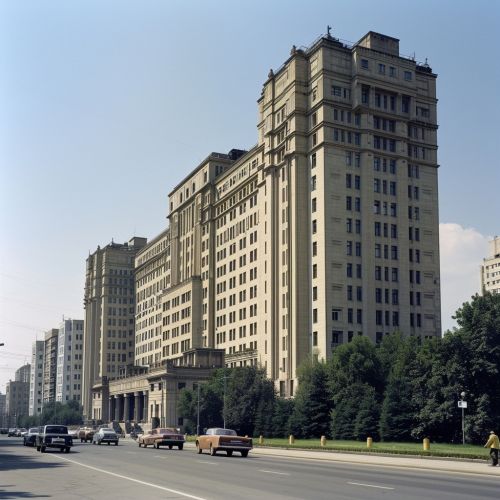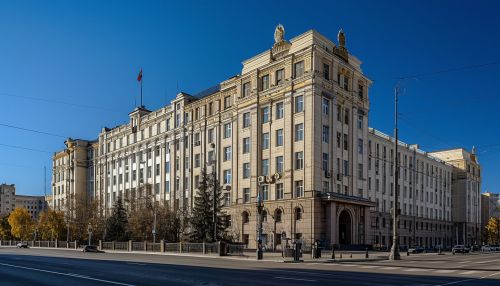Council of Ministers of the USSR
History
The Council of Ministers of the USSR was established in 1946, replacing the People's Commissariats that had been in place since the inception of the Soviet Union. The Council was the highest executive and administrative body of the USSR, and its main responsibilities included the general administration of the Soviet Union's economy and society.


The Council was composed of the Chairman, his deputies, the ministers, the heads of state committees, and the chairmen of the Council of Ministers of the Union and Autonomous Republics. The Chairman of the Council of Ministers, often referred to as the Premier, was the head of government and held a position of significant power within the Soviet Union.
Function and Structure
The Council of Ministers was responsible for the implementation of laws and resolutions passed by the Supreme Soviet of the USSR, the highest legislative body in the country. The Council also had the authority to issue decrees and resolutions, which had binding force throughout the USSR.
The structure of the Council of Ministers was defined by the Constitution of the USSR. The Council was made up of one Chairman, several First Deputies and Deputies, Ministers, Chairmen of the State Committees, and Chairmen of the Councils of Ministers of the Republics. The Council was accountable to the Supreme Soviet and in the periods between sessions of the Supreme Soviet, the Presidium of the Supreme Soviet.
Role in the Soviet Government
The Council of Ministers played a crucial role in the Soviet government. It was responsible for the general administration of the country's economy, including the direction and control of industry, agriculture, transport, trade, and finance. The Council also oversaw the administration of the Soviet Union's social and cultural affairs, including education, health services, and science and technology.
The Council of Ministers was also responsible for the implementation of the state's domestic and foreign policy, the maintenance of public order, and the defense of the USSR. It had the authority to declare a state of emergency and take necessary measures to protect the sovereignty and territorial integrity of the USSR.
Dissolution
The Council of Ministers of the USSR was dissolved in 1991, following the dissolution of the Soviet Union. Its functions were taken over by the newly formed governments of the independent states that emerged from the former Soviet Union.
